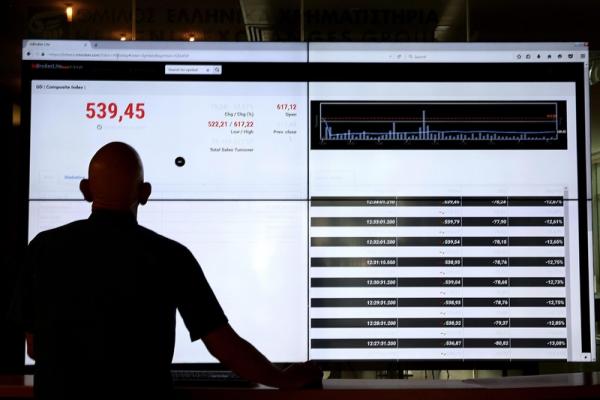© Reuters.
Skillz Inc. provided an update on their Q3 2023 results during an earnings call, reporting a YoY revenue decline of 38% to $36.4 million. Despite a net loss of $33.5 million, the company expressed optimism about achieving positive adjusted EBITDA on a run rate basis by the end of next year. Skillz also highlighted their strategic focus on enhancing their platform, improving go-to-market efficiency, and demonstrating a clear path to profitability.
Key takeaways from the call:
- Skillz introduced two new product features in Q3 aimed at improving user retention and engagement.
- The company is actively combating the use of bots in the industry, taking legal actions against offending companies.
- Skillz ended Q3 with $339.9 million in cash and a net loss of $33.5 million.
- An adjustment to Q2 financial statements resulted in an improved net loss figure.
- The company’s paid user conversion rate was 16% in Q3, slightly down from 18% in Q2 due to a shift in focus towards platform optimization over user acquisition.
- Marketing expenses decreased by 66% YoY and 21% QoQ, contributing to an improved developers’ revenue share.
- Two top customers, Big Run and , launched games in Q3, expected to impact revenue in the next six to 12 months.
Skillz Inc. (NYSE:SKLZ) is focused on enhancing their platform and improving go-to-market efficiency, as part of their strategic pillars. The company introduced two new product features in the third quarter aimed at improving user retention and engagement. They also discussed their ongoing efforts to combat the use of bots in the industry, including taking legal actions against companies using such methods.
Despite the decline in revenue, the company remained optimistic about its financial trajectory. Skillz reported a net loss of $33.5 million for the quarter and an adjusted EBITDA of negative $18.5 million. However, they ended the quarter with $339.9 million in cash and are focused on reducing user acquisition costs and improving payback periods.
The company also mentioned an adjustment made to their Q2 financial statements, which resulted in an improvement in net loss. With a paid user conversion rate of 16% in Q3, slightly down from 18% in Q2, Skillz is prioritizing platform optimization over user acquisition.
In addition to these strategic moves, the company reported a decrease in marketing expenses by 66% YoY and 21% QoQ. This reduction, coupled with the lower user acquisition, is contributing to an increase in developers’ revenue share.
Looking ahead, Skillz announced that two top customers, Big Run and Tether, built and launched games in Q3. The expectation is that these games will start impacting revenue in the next six to 12 months. The company also aims to return to sustainable profitable growth by 2024.
InvestingPro Insights
The InvestingPro data highlights a few key points about Skillz Inc. that align with the company’s recent earnings call. Firstly, the company’s balance sheet is in a healthy state, holding more cash than debt, aligning with the reported $339.9 million in cash at the end of Q3 2023. Secondly, Skillz’s gross profit margins are impressive. However, the company is burning through cash quickly, which may explain the significant net loss reported in the recent quarter.
Adding to this, analysts are predicting a sales decline for the company in the current year, which aligns with the reported YoY revenue decline of 38% in Q3. The company’s stock price has been quite volatile, and has fallen significantly over the last year. The analysts also do not anticipate the company will be profitable this year, aligning with the reported net loss.
These insights are part of hundreds of InvestingPro Tips available for Skillz Inc., and other companies, offering valuable guidance for investors.
Full transcript – SKLZ Q3 2023:
Operator: Good afternoon all. I would like to welcome you all to the Skillz Inc 2023 Third Quarter Results Call. My name is Brika and I will be your moderator for today’s call. All lines are on mute for the presentation portion of the call today with an opportunity for questions-and-answers at the end. [Operator Instructions] I would now like to pass the conference over to your host, Jim Leahy from JCIR to begin. So Jim, please go ahead.
Jim Leahy: Good afternoon and welcome to the Skillz third quarter earnings conference call. On the call today are Andrew Paradise, Skillz Co-Founder and CEO; Casey Chafkin, Co-Founder and CSO, and Jason Roswig, President and CFO. This afternoon, Skillz issued its 2023 third quarter results release, which is available on the company’s Investor Relations website. Before I turn the call over to Andrew, please note that some of management’s comments today will include forward-looking statements within the meaning of federal securities laws. Forward-looking statements, which are usually identified by the use of words such as will, expect, should, or other similar phrases, are subject to numerous risks and uncertainties that could cause actual results to differ materially from what we expect. Therefore, you should exercise caution in interpreting and relying on them. We refer you to the company’s SEC filings for more detailed discussion of the risks that could impact future operating results and financial condition. During the call, management will discuss non-GAAP measures, which it believes can be useful in evaluating the company’s operating performance. These measures should not be considered in isolation or as a substitute for our financial results prepared in accordance with GAAP. The reconciliation of these measures to the most directly comparable GAAP measures is available in the company’s third quarter 2023 earnings release. With that, I’ll turn the call over to Andrew for some opening remarks, followed by Jason for a discussion of our financial performance before we open the call for questions. Andrew?
Andrew Paradise: Thank you, and good afternoon to everyone. Throughout the third quarter, we made continued progress on the four strategic pillars we laid out last year that we expect to return Skillz to generating consistent top line growth, cash flow. These four pillars are: first, enhancing our platform to improve customer and developer engagement and retention; second, upleveling our organization; third, improving our go-to-market efficiency; and forth, demonstrating a clear path to profitability. I want to level set expectations because more progress needs to be achieved ahead in order for us to fully achieve our business turnaround objectives. As an example, our traffic levels continue to lag where we want them to be. Paying monthly active users was 168,000 in Q3 compared to 200,000 in Q2. Ultimately, we still have more work ahead to grow Skillz platform to generate consistent, profitable growth and enhance shareholder value. Our near-term focus has been to improve our user economics before focusing on growing traffic for the sake of growth. We have been focusing on reducing customer acquisition costs and on growing LTV by improving our product experience to drive higher engagement. Once we reach our target of a sustained six month payback period, we’ll shift focus to growing traffic. Beyond the project experience itself, we’re working on our VIP program to ensure our most valuable players are recognized, rewarded, and retained. We’ve built a unique platform, and if we prioritize continuing to improve retention, while maintaining healthy user economics, we can generate significant returns for our shareholders. Let me turn to a brief review of our third quarter progress and Q4 to-date before I turn the call to Jason for a review of financials. I’ll begin with some of the highlights of our efforts to enhance our platform to improve customer and developer engagement and retention. As we discussed on our Q2 call, our product team is developing a new feature pipeline that is driving higher customer attention, engagement, and monetization. To this end, we introduced two new product features in Q3, daily challenges and progressive leagues, which have now been rolled out to games that account for the majority of our revenue. When we introduce new features, we’re targeting a 10% or greater improvement in retention, engagement, or monetization. And I’m pleased to share that the two new features accomplish this goal in Q3. For Q4, we expect to roll out two to three new features, and then we’ll look to extend that momentum into 2024. It’s truly exciting to see the platform launching new, meaningful features for players. Turning to our second pillar, upleveling our organization. Our focus on performance, ownership, and accountability is making a tangible difference in productivity as evidenced by the new and creative features of our product and engineering organizations that have been built this past quarter, as well as the lineup of new product features for Q4 in 2024. In Q3, we filled key roles that we expect will significantly benefit our company and include roles such as Vice President of Consumer, Head of Developer Product, and Head of Mobile Engineering. We’re also making progress with transitioning away from our dependence on contract labor to full-time permanent employees that are committed to Skillz mission. While we still have work to do, we’ve made measured progress with putting the right people in the right roles while bringing our newer employees fully up to speed with those strategic priorities. In this respect, we expect our upcoming move into our new Las Vegas headquarters will further enhance collaboration, productivity, and accountability across the organization. Moving on to our third pillar, our go-to market. Our Q3 user acquisition cost was the lowest in 2020. We’re on track to achieve a payback period of six months in the next few quarters. This will position Skillz as having well above the industry average payback period for companies in the mobile gaming market. Moreover, in Q3, we launched our highest number of prize-enabled games since Q2 of last year. So that’s the highest since we started turning around our business. This reflects the changes we made in Q2 to relaunch our developer revenue share agreement. To remind listeners, we now share revenue based on entry fees as opposed to a percentage of profits, which is much easier for developers to understand and calculate in real time. To this change, several of our biggest developers introduced new games in Q3. Developers such as Big Run Studios and Tether Studios release new content for the first time in several quarters and are re-engaged in growing the platform. Beyond getting our developer community to launch more content, we’re also improving the transparency and monitoring of games that are candidates under our Skillz publishing model. As we finish improving user economics and transition to growing traffic as our top priority, we’ll look to grow new titles beyond the existing core library. We’ll tightly monitor the game-level economics by channel to ensure that every dollar spent generates an attractive return on investment. Before we move to discuss our fourth pillar of moving the company to profitability. I wanted to revisit a topic that we discussed on our Q2 call. Critical to the customer and developer engagement in our industry is addressing the disruptive use of bots to defraud players of their winnings, which has become prevalent across our industry. I want to expand on this topic now as it’s essential to ensuring the future of our industry. To be clear, our industry cannot exist without ensuring players are not deceived by box as this attacks the very essence a fair and meaningful competition. Skillz proprietary platform fairly matches players against other real players. You always play humans when you play on Skillz. This is not the case with all companies in our market. Preserve fairness in the industry we’ve created, we have deployed a meaningful amount of resources to combat this deception. An example of this is the lawsuit we filed alongside Big Run studios against AVAGames as it’s evident to us and big run that AVAGames uses bots. This is a company that is committed consumer fraud to date amounts to over $1 billion. Their deceptive use of bots means the games on their platform or rig pure and simple. They’re stealing money from players that don’t know they’re playing against the bot and believe they’re playing against another human opponent. Despite clear evidence to the contrary, AVAGames continues to publicly state that they do not eat bots and continues to entice consumers based on a false promise of fairness. I want to thank the news outlets in the past months that have already covered this fraud in our industry, and I’d encourage everyone on this call to read the press coverage. We know there are other companies in our industry who use bots and that makes them justice corrupt as AVAGames, and we will continue our efforts to expose those practices. This year, our legal spend will approximately amount to $18 million. And while it certainly impacts our near-term operating results and cash burn, we know that widening this industry of these deceptive practices is the only path forward for the industry. Since we’re the leading company that created this industry, and we don’t engage in bots. We have to fight this. We anticipate the elimination of this practice to dramatically change the future of the industry. Absent our actions consumers who engage in skill-based games will continue to be deceived, and this industry would eventually lose the public’s trust. It’s absolutely critical for both players and developers that 100% of the industry meets the highest level of trust for consumers. Now I will discuss the fight for fairness, let me talk a little bit about our fourth pillar, which is demonstrating a clear path to profitability. Jason will review the details of our Q3 results in a moment, but I’m encouraged by the progress we’ve achieved to become profitable. This provides me with cautious optimism that we’re on pace to generate quarterly sequential top line growth in 2024 and achieve our goal of generating positive adjusted EBITDA on a run rate basis by the end of next year. In Q3, we continued to improve our cash management as our operating cash burn was $18.5 million, and our total cash burn, including onetime items came to approximately $21 million. Given our net cash position of approximately $210 million in quarter-over-quarter improvements of our operating cash burn, we have a significant runway to return our business to sustainable high-velocity profitable growth. In closing, while real progress has been made. I hope it’s evident that we’re well aware that we have much work to do. The Skillz Board, management team and the entire organization remains firmly dedicated to successfully executing on our four pillars and creating a strong foundation to create value for our shareholders. And with that, I’ll turn it over to Jason.
Jason Roswig: Thanks, Andrew. Revenue in the third quarter was $36.4 million, down 38% year-over-year and down 9.3% sequentially. Our paid user conversion rate which is paying MAU divided by MAU was 16% in Q3, slightly down from 18% in Q2 due to prioritizing optimizing our platform over user acquisition in the prior quarter. Third quarter UA marketing was $6.2 million, a decrease of 66% year-over-year and a 21% decrease quarter-over-quarter. As Andrew indicated, we are confident in our ability to continue to improve our payback period with the goal of achieving a best-in-class 6-month target. Q3 Engagement Marketing was $16.9 million, down 28% year-over-year and in line with Q2. Research and development expense was $7.9 million in the quarter, down 1% year-over-year. On a GAAP basis, R&D was 21.6% of quarterly revenue. Sales and marketing expense was $31.9 million, down 38% year-over-year, including $2.5 million of stock-based compensation. On a GAAP basis, sales and marketing was 88% of Q3 revenue, up 1 basis point year-over-year and up 7 basis points quarter-over-quarter. General and administrative expense was $24.4 million, inclusive of $8.5 million in stock-based compensation, up 16.5% year-over-year. On a GAAP basis, G&A was 67% of revenue, up 31.6 basis points year-over-year. Quarter-over-quarter, G&A was up 2 basis points as a percent of revenue. Net loss of $33.5 million decreased by $49.7 million year-over-year. Adjusted EBITDA in the quarter was negative $18.5 million. A 14% year-over-year decrease and a 2% decrease quarter-over-quarter. Adjusted EBITDA margin decreased by 4% from negative 47% in Q2 to negative 51% in Q3. We ended the third quarter with $339.9 million of cash, comprised of $330 million cash and cash equivalents, $7 million of marketable securities, $2.9 million in restricted cash and ended the quarter with approximately $130 million of total outstanding debt. With our improving cash burn rate, we have the flexibility to deploy capital to enhance shareholder value. Last, I would like to touch on an adjustment we made to our Q2 2023 financial statements that will be reflected in our Q3 2023 10-Q filing. During the preparation of a condensed consolidated financial statements for the period ended September 30, 2023, the company identified certain immaterial errors related to stock compensation expense and operating expense accrual for the 3 months ended June 30, 2023, which resulted in a net overstatement of operating expenses for the period. First, we identified that an accrual related to professional services was incorrectly over accrued in Q2. As a result of the adjustment, our Q2 financial statement operating expenses improved by $1.3 million at adjusted EBITDA resulted in a change in Q2 from negative $20.2 million to negative $18.4 million. Second, we identified an error in how we reported stock-based compensation, resulting in a benefit of $4 million to our net loss. Both of these errors resulted in an improvement in Q2 net loss of negative $22 million to negative $16.7 million. We have the proper controls in place to ensure these errors only impact Q2 and will not be repeated. At this time, I’ll turn the call to the operator for the Q&A session.
Operator: Thank you. [Operator Instructions] We have the first question on the line from Ed Alter of Jefferies. Your line is now open.
Ed Alter: Hi, everyone. This is Ed Alter on for Andrew. Just this is for Andrew, just provide an update on the new rev share agreement and how Studios are larger reacting to that? And when we could expect to see some of them putting some of their own marketing dollars behind spending their games and what that impact would be?
Andrew Paradise: Sure. Ed, thank you for the question. So the DevRev share went live in May. To give everyone a good idea of timing of how long it takes to build a mobile game, and bring it to marketing scale. We should expect six to 18 months and probably more realistically 18 months. So six months being kind of the fastest time to market to build a game. We’ve seen a reinvigorated content creation community building games again on the platform. And I mentioned in my remarks, both Big Run and Tether build and launch games in Q3. which are two of our top customers. But we have a mix of both existing and new customers that make up all the games that went live in Q3. From an expectation standpoint of when those could scale I would say we should look for them to have impact on revenue in more like six to 12 months.
Ed Alter: Great. Thanks for that. And then looking at the take rate, it looks like it’s been dipping down the last couple of quarters. Just talk through kind of the drivers of that. Is that the rev share coming through on that? Or what’s driving that?
Andrew Paradise: That’s a great question, Ed. Jason, do you want to take that one?
Jason Roswig: Thanks, Ed. So I think we’ve had over the last several quarters, as we’ve had lower user acquisition, we have less users, but we’ve been seeing that the users on our platform have become more valuable to us. So over time, we’ve seen our mature — more mature user economics improving despite lower — despite overall lower users on the platform. I’d also say that as you lower your marketing expense, right, shared with the developers that also reduces their payments, right? So you also have that effect showing through in the financials.
Casey Chafkin: Ed, this is Casey Chafkin. Just to make sure I clarify what Jason is saying there. When we spend money on consumer acquisition, that money is treated as an operating expense, meaning it actually increases our revenue. The developer portion of that, though, is a contra revenue and that expense is shared with our developers. So when our marketing expense is higher, the developers are sharing in that expense and that increases our — the effective take rate when the marketing expense is lower, developers aren’t sharing or don’t have as much of that expense burden and so their revenue share goes up as a percentage of revenue.
Ed Alter: I see. I see. So then what would be kind of a longer-term target to think about as you look towards that profitability margin for fourth Q ’24, what would the take rates kind of be in the ballpark for that scenario?
Casey Chafkin: From my perspective, I think what you can expect is if Skillz is running the acquisition budgets, you could expect a take rate roughly in line with where we are right now. But as we see games that are running their own marketing budgets, that take rate would conceivably be lower. And so right now, we don’t — as a — from a forecasting perspective, we don’t break out those two possibilities in terms of growth. But you kind of expect in a status quo environment where Skillz is largely the driving force of marketing on the platform. The take rate would be in line with where it is now.
Ed Alter: Great, great. Thanks. That’s all I had. Thanks for the time guys.
Andrew Paradise: Thanks, Ed.
Operator: Thank you. I would now like to hand it back to Andrew Paradise for closing remarks.
Andrew Paradise: Great. All right. Well, thank you all again for joining us today. We look forward to providing updates on our progress as we return Skillz to sustain profitable growth in 2024. And we’ll look forward to meeting with you to discuss our fourth quarter results on our next call. So until then take care.
Operator: Thank you for joining the Skillz conference call. You may now disconnect.
This article was generated with the support of AI and reviewed by an editor. For more information see our T&C.
Read the full article here












